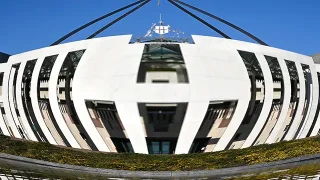
Submission to the Inquiry into the Transport Oriented Development Program
The Centre for Independent Studies (CIS) appreciates the opportunity to provide a submission to the inquiry into the Transport Oriented Development Program.
The CIS is a leading independent public policy think tank in Australia. It has been a strong advocate for free markets and limited government for more than 40 years. The CIS is independent and non-partisan in both its funding and research, does no commissioned research nor takes any government money to support its public policy work.
Researchers at the CIS have done substantial work on many of the issues relevant to the current inquiry. However, this submission focusses on the need for policies like the Transport Oriented Development Program.
April 2024
Housing policy in NSW has been failing. It has relied on setting targets for local governments and hoping councils would adhere to them. Those targets are too low, out of date and have not been enforced. As a result, the housing affordability crisis is getting worse.
We need a different approach. Specifically, councils need to be told what housing to approve. The NSW government’s proposals for Transport Oriented Development and Diverse and well-located homes offer a sensible approach to reducing the housing crisis. This has been done with less consultation or co-ordination than would be desirable in the long run, but that is understandable given the urgency of the problem.
This submission does not examine the details of these programs, which have been well explained in elsewhere. Instead, we focus on why the NSW Government’s centrally-directed approach is appropriate. This is arguably the most important and controversial issue in Australian housing policy now.
There is general agreement that we need to build much more housing. Specifically, National Cabinet has agreed on a target of 1.2 million dwellings over 5 years, of which NSW’s share would be about 75,000 dwellings a year. That target and the NSW government’s agreement to it are not in this inquiry’s terms of reference. Accordingly, this submission takes them as given.
However, as background, the CIS strongly supports the target of 1.2 million dwellings. Australia is facing a crisis of housing affordability that is having terrible social and economic costs. The solution is to allow more building. This can be achieved by state governments wresting control over planning restrictions from local councils and setting high housing targets. The CIS has discussed the need for higher targets in several submissions to recent government inquiries. The most recent, collated versions of these submissions are available as:
- Housing Affordability and Supply Restrictions; CIS Policy Paper 55; by Peter Tulip, February 2024; and
- Where should we build new housing? Better targets for local councils; CIS Analysis Paper 45; by Peter Tulip, March 2023.
The most important question facing this inquiry is: given the agreement of National Cabinet with its implied target for NSW of about 75,000 dwellings a year, how should this be achieved?
The starting point for any answer is ’not with existing policy’. NSW housing policy has involved setting targets for local councils. The most recent set of targets, for the five-year period from 2021/22 to 2025/26, required building a minimum 37,650 dwellings a year in the Greater Sydney region.
Half-way through this period, building approvals have only averaged of 32,975 dwellings a year, 12% below the target. As shown in Table 1, 18 of 33 councils are below their minimum target. Adherence to the targets is not being enforced. There is no public evidence that it has been commented upon or even monitored.
There is a bigger problem. The National Cabinet target of 1.2 million homes was agreed in 2023. Greater Sydney’s share of that (given that it has about 19% of the national dwelling stock) would be about 46,300 dwellings a year. For affordability and feasibility reasons, Sydney should have a disproportionately higher target than regional NSW. But even without allowing for that, the national target implies a far greater rate of construction than the current targets (37,650) and a greater rate again than current rates of construction (32,975).
In short, the targets are too low, out of date and are not being enforced.
As noted above, the status quo is failing. Relying on councils is not working. They are not meeting the inadequate targets they already have. They have demonstrated aversion to increasing new construction, reacting with uncompromising opposition to the State government’s proposals. They need to be told what to build.
How should targets be enforced? One possibility is financial penalties. A difficulty with this is that financially penalising a council for failing to approve more housing may make the problem worse. Especially if their argument is that they are unable to afford the supporting infrastructure. A financial penalty does not directly solve the problem. Moreover, it may create incentives for local councils to provoke disputes, so they can portray themselves as ’defending the community’.
A better enforcement mechanism is for the State government to specify detailed planning controls that would apply instead. So that if a council fails to make satisfactory progress towards its target, the State controls become operative.
Recent proposals by the state government, including the Transport Oriented Development and the Diverse and well-located homes policy, provide good examples of this approach. These specify increases in density that should be permitted in specific locations. However, councils that wish to increase density in other ways are free to do so, provided their plans allow for at least as much uplift.
Despite some appearances to the contrary, the policy of the NSW opposition is substantively similar. Opposition leader Mark Speakman says “The opposition is in furious agreement with ramping up housing supply and that will involve substantial rezonings along major corridors”. The opposition believes local councils should be able to develop their own plans “with strict time limits and sanctions … with the ultimate sanction being, if you don’t do it, we — the State — will step in” (link). ‘Stepping in’ would presumably involve enforcing State government controls, although that has not been explicitly stated.
Essentially the government policy is ‘follow the state controls, or do more’ whereas the opposition policy is ‘if you don’t allow enough housing, the state will set controls’. One is ‘Do A, otherwise B’; the other is ‘Do B, otherwise A’. The difference seems largely presentational.
Table 1: Building Approvals by Local Council
| Council | GSC target | Actual (annualised) | Ratio | Rank | |
| 21/22 to 25/26 | annualised | July 2021 to Dec 2023 |
actual/target | ||
| Bayside | 8,500 | 1,700 | 765 | 45% | 30 |
| Blacktown | 16,500 | 3,300 | 4,633 | 140% | 9 |
| Blue Mountains | 550 | 110 | 156 | 142% | 8 |
| Burwood | 2,200 | 440 | 238 | 54% | 25 |
| Camden | 10,000 | 2,000 | 1,969 | 98% | 16 |
| Campbelltown | 7,100 | 1,420 | 1,102 | 78% | 21 |
| Canada Bay | 3,800 | 760 | 484 | 64% | 23 |
| Canterbury-Bankstown | 10,500 | 2,100 | 1,702 | 81% | 18 |
| Cumberland | 10,000 | 2,000 | 1,611 | 81% | 19 |
| Fairfield | 3,000 | 600 | 1,093 | 182% | 3 |
| Georges River | 3,450 | 690 | 716 | 104% | 14 |
| Hawkesbury | 1,100 | 220 | 333 | 151% | 7 |
| Hornsby | 3,800 | 760 | 370 | 49% | 27 |
| Hunters Hill | 150 | 30 | 31 | 103% | 15 |
| Inner West | 5,500 | 1,100 | 525 | 48% | 28 |
| Ku-ring-gai | 3,000 | 600 | 478 | 80% | 20 |
| Lane Cove | 3,000 | 600 | 348 | 58% | 24 |
| Liverpool | 11,000 | 2,200 | 2,422 | 110% | 11 |
| Mosman | 250 | 50 | 55 | 110% | 12 |
| North Sydney | 3,000 | 600 | 164 | 27% | 32 |
| Northern Beaches | 3,500 | 700 | 787 | 112% | 10 |
| Parramatta | 22,500 | 4,500 | 2,375 | 53% | 26 |
| Penrith | 7,500 | 1,500 | 1,157 | 77% | 22 |
| Randwick | 4,000 | 800 | 369 | 46% | 29 |
| Ryde | 8,400 | 1,680 | 1,391 | 83% | 17 |
| Strathfield | 3,500 | 700 | 114 | 16% | 33 |
| Sutherland Shire | 3,800 | 760 | 1,206 | 159% | 6 |
| Sydney | 14,000 | 2,800 | 929 | 33% | 31 |
| The Hills Shire | 9,500 | 1,900 | 3,577 | 188% | 2 |
| Waverley | 1,250 | 250 | 273 | 109% | 13 |
| Willoughby | 1,600 | 320 | 537 | 168% | 5 |
| Wollondilly | 1,800 | 360 | 890 | 247% | 1 |
| Woollahra | 500 | 100 | 174 | 174% | 4 |
| Sum | 188,250 | 37,650 | 32,975 | 88% | |
| Memo items: | |||||
| Sydney share (19%) of national target | 46,365 | ||||
| Central Coast | 1,602 | ||||
Notes: Ratios in bold are below the minimum target.
Targets are from https://www.planningportal.nsw.gov.au/local-housing-strategies-tracker. We use the minimum of specified ranges.
Actual approvals are from ABS Building Approvals https://explore.data.abs.gov.au/?fs[0]=Industries%2C0%7CBuilding%20and%20construction%23BUILDING_CONSTRUCTION%23&pg=10&fc=Industries
The ABS includes Central Coast in Greater Sydney whereas the Greater Sydney Commission did not.
-
Transport Oriented Development
As the Government and a large literature (link1, link2) have explained, train stations are a sensible location for increased density. This is for many reasons:
- Locating housing near public transport increases access to jobs, education, and other amenities, promoting economic opportunity and agglomeration economies.
- It promotes walkable, lively communities with more social interaction.
- It has lower public infrastructure requirements than alternatives.
- It increases housing supply in a way that minimises car traffic, which opinion polls say is the leading objection to increased density (Productivity Commission, 2011, Table 2.4; Susan McKinnon Foundation, 2023, p132).
- It also minimises changes to ‘neighbourhood character’. Train stations are already busy, lively locations.
- The alternative of car-dependent urban sprawl is bad for carbon emissions, koala habitat and other environmental concerns
For these and other reasons, Transport Oriented Development is actively promoted within the planning community and increasingly adopted around the world.
The policy advanced so far is sensible and well-directed. However, it does not clearly reach NSW’s target of 75,000 dwellings a year. Further reforms are needed to increase housing supply in:
- Regional NSW. 38% of NSW’s housing stock is outside Greater Sydney. Some of this is unnecessarily and extremely expensive, especially in tourist centres on the coast. A common reason for this is restrictive land release. For example, many residential blocks of land in Byron Bay (zoned R2) are valued at around $1,000/sqm. However, just a short walk up the road, rural land, zoned RU2, is valued at $20/sqm. Similar examples can be found in many NSW regional centres.
Towns like Byron Bay complain that key workers are unable to live within commuting distance of work. Temporary accommodation, like Airbnb, has been restricted in response. This harms the town’s major industry of tourism. A simple, less costly solution is to allow more housing on the town’s outskirts. - Recent policy announcements cover urban infill. However, 38% of residential construction in Greater Sydney is detached housing, most of which occurs in outlying suburbs. Residential land on the suburban fringe is expensive, relative to agricultural land or to land on the fringe of other cities, indicating that more greenfields housing needs to be provided. However, this involves complicated questions of infrastructure provision and the time lags are long.
- Further Transport Oriented Development. It is sensible to upzone the highest priority locations first. However, many other transport hubs, like Edgecliff, Bondi Junction and Chatswood, are also ripe for more housing.
That may require further water, sewerage and other infrastructure, however the costs of providing that (typically measured in tens of thousands of dollars per-apartment) are small relative to the value of the extra housing enabled (measured in hundreds of thousands). - Student accommodation. a surge in student immigration is placing great pressure on the rental market, leading to restrictions on student visas. However, this reduces export earnings and per capita national income. A better approach, which would raise, rather than lower, our living standards, would be to require universities to redirect some of their lucrative student fees towards building student accommodation. That would transform student immigration from a cause of the housing shortage into a solution, increasing public support. Press reports suggest that some university administrators consider housing to be ‘not their role’ even though they have land suitable for development. Governments need to clarify universities’ priorities.
- Perhaps most important – and encompassing the policies above — new high targets need to be set for local councils. Related to this, the extent to which the policies announced to date satisfy NSW’s commitment to 75,000 dwellings a year needs to be clarified. The Government has foreshadowed that new targets will be announced by July 1 .
In the long run, it would be desirable if all these policies could be announced together, with joint consultation — so that priorities and substitutability between options can be discussed. For example, there are strong interactions between the TOD and housing targets — councils should be able to choose between the two approaches. However, the staggered, hurried announcement of policies to date is understandable in view of the severity of the housing crisis and the need to start building quickly. When families are sleeping in cars and tents, some urgency is necessary.









